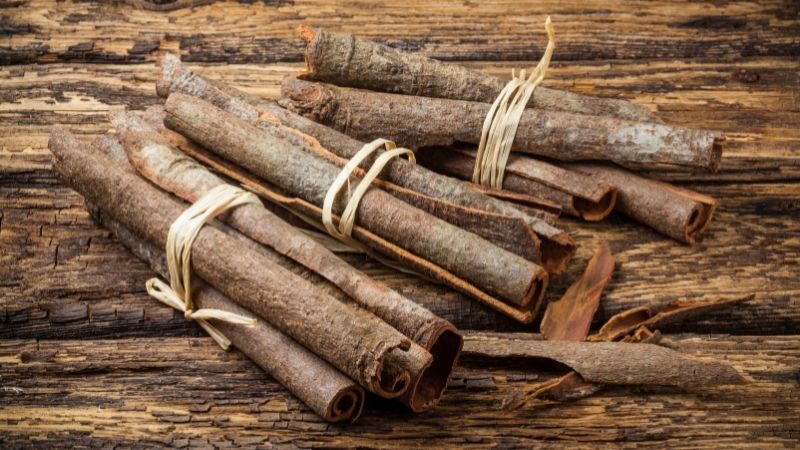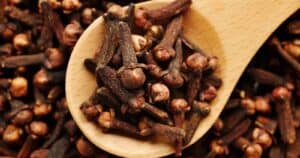Cinnamon is one of the most popular and widely consumed spices worldwide, known for its taste, flavor, and medicinal properties. It is usually available as dried sticks, rolls, and powder. However, there seems to be a slight confusion between the types and forms of cinnamon.
The essential oil content and harvest parts make some cinnamon spicy and others sweet. The cinnamon prepared from the tree bark is sweeter due to its lower essential oil content. In contrast, the cinnamon prepared from the cinnamon oil is spicy (hot). The cinnamon essential oil contains a higher quantity of the cinnamon phytochemical, cinnamaldehyde, responsible for cinnamon’s flavor and other chemical properties.
Several people are only familiar with the forms of cinnamon and have no idea of the types of cinnamon. Instead, more people are aware of the difference in taste and flavor. This article will enlighten you about the types of cinnamon and why they taste the way they do. So, read on to learn more!
Are All Cinnamon Equally Flavored?
Not all cinnamon is equally flavored, so people classify cinnamon as either sweet or spicy. Although both cinnamon flavor classes come from the same tree, it seems pretty antithetical to have them unequally flavored. The mystery lies in the method of harvesting and the percentage composition of the essential oil, which contains the phytochemical associated with cinnamon, cinnamaldehyde. As a result, we can say there are two types of cinnamon based on flavor.
A table representing the flavor variants of cinnamon and their characteristics
| Sweet or Ceylon Cinnamon (True Cinnamon) | Spicy or cassia cinnamon (Fake cinnamon) |
| – produced from the inner tree bark – Pale or light brown color – Cinnamon sticks feel smooth to the touch – It contains a lesser percentage of cinnamaldehyde and coumarin. – It is not potentially hazardous to health – It has a mild nuanced flavor that makes it more universally applicable – It is compatible with sweet dishes and desserts. – It is pretty expensive and not readily available. – Produced in India (Sri Lanka) | – produced from the outer tree bark – It has a reddish-brown to dark brown color – Cinnamon sticks feel rough to touch contains more cinnamaldehyde and coumarin. – High coumarin content thins the blood, making it a potential health hazard – Should not be consumed in large quantities – It has a bold, intense, and aromatic flavor – It is cheaper and readily available in grocery shops as cinnamon powder – Produced in China, Vietnam, Indonesia, and other south Asian parts – compatible with savory dishes and foods requiring an intense flavor |
Types of Cinnamon
Ceylon cinnamon (Cinnamomum Verum)

Ceylon cinnamon is what most people refer to as “true cinnamon” and comes from Sri Lanka. It is harvested from the inner bark of the Cinnamomum verum tree. It has a lower percentage composition of the cinnamon phytochemical, giving its nuanced delicate flavor.
As a result, most people describe it as sweet cinnamon. It is compatible with most savory foods and drinks because it does not have an intense flavor. It is easily identified by its pale color and thin structure, hand-manufactured, and more expensive.
Cassia cinnamon (Cinnamomum aromaticum)

Cassia cinnamon is what most people refer to as “fake cinnamon” and comes from the southern part of China. It is readily available in the United States and other parts of the world because it is cheaper. Cassia cinnamon has a bolder, more aromatic flavor which most people describe as spicy.
Forms of Cinnamon, Their Qualities, and Uses.
Cinnamon comes in various forms regardless of what type. The forms of cinnamon depend on the usage and the flavor intensity you desire. As a result, we have ground cinnamon, powdered cinnamon sticks, quills, etc. Here is what we mean:
Cinnamon Sticks and Quills
They are produced from dried strips cut from the bark of the cinnamon tree and used for producing herbal remedies like herbal chai tea and infusions, flavoring some types of apple juice, etc. Cinnamon sticks from Ceylon cinnamon have several layers of thin bark, while the sticks from cassia have just a single layer of thick bark.
Cinnamon Chips
They are small bits and pieces of cinnamon bark and come as ready-to-use chips available in most grocery stores. Alternatively, you can DIY to get your own chips by crushing or cutting cinnamon sticks into smaller pieces. Cinnamon chips are perfect for adding to tea blends, especially when you want to use less than one cinnamon stick. Cinnamon chips are better if your cinnamon type is cassia to control the quantity you use effectively.
Are Cinnamon Supplements and Pills As Flavored as Organic Cinnamon?
Cinnamon supplements and pills are produced from natural cinnamon and do not give off any pronounced flavor in terms of taste. However, you may perceive the supplement’s aroma or scent because of the presence of the cinnamon essential oil.
People should consume Cinnamon supplements with discretion. Ideally, you should discourse your intentions to consume cinnamon supplements with a healthcare professional, especially if you have any underlying medical conditions. The reason is that some variants of cinnamon supplements may still contain the blood-thinning factor, coumarin.
What Are the Benefits of Cinnamon as a Spice ?
Cinnamon possesses significant culinary and health benefits as an ancient
Here are some benefits of consuming cinnamon:
- Serves as a food additive and flavoring
- It may act as an anti-inflammatory agent
- It is easy to incorporate into food recipes
- It blends with several dishes and is almost universal
- It may have antibacterial and antimicrobial properties
- Contains significant antioxidants
- May regulate blood sugar levels
- It makes good nutritional supplements and pharmaceutical additives, etc.
FAQs
Does Cinnamon Taste Spicy or Sweet?
Many people are only familiar with the warm sweet taste of cinnamon, but close attention reveals that cinnamon possesses another flavor we can describe as pungent or aromatic-spicy. The flavor difference in cinnamon is the percentage composition of the phytochemical cinnamaldehyde and the part of the plant from which the final product is obtained.
What Is the Difference Between Mexican Cinnamon and Regular Cinnamon?
Mexican Cinnamon is sweet, mild, and possesses a more complex flavor pattern than the regular cinnamon available in the United States. Unlike the regular Cinnamon, Mexican Cinnamon is made from the soft layers of the bark of the cinnamon tree and so is lighter in color. In contrast, the regular cinnamon is darker and harder.
What Type of Cinnamon Is Best for Health Reasons?
Both Ceylon and cassia cinnamon are good and possess enormous health benefits. However, cassia cinnamon should not be consumed in large amounts because it contains a blood-thinning agent known as coumarin. Prolonged usage of cassia cinnamon could become a health hazard. Therefore, if you intend to consume cinnamon for much longer or larger quantities, perhaps Ceylon cinnamon is better as a supplement.
Final Thoughts
Cinnamon remains a unique





